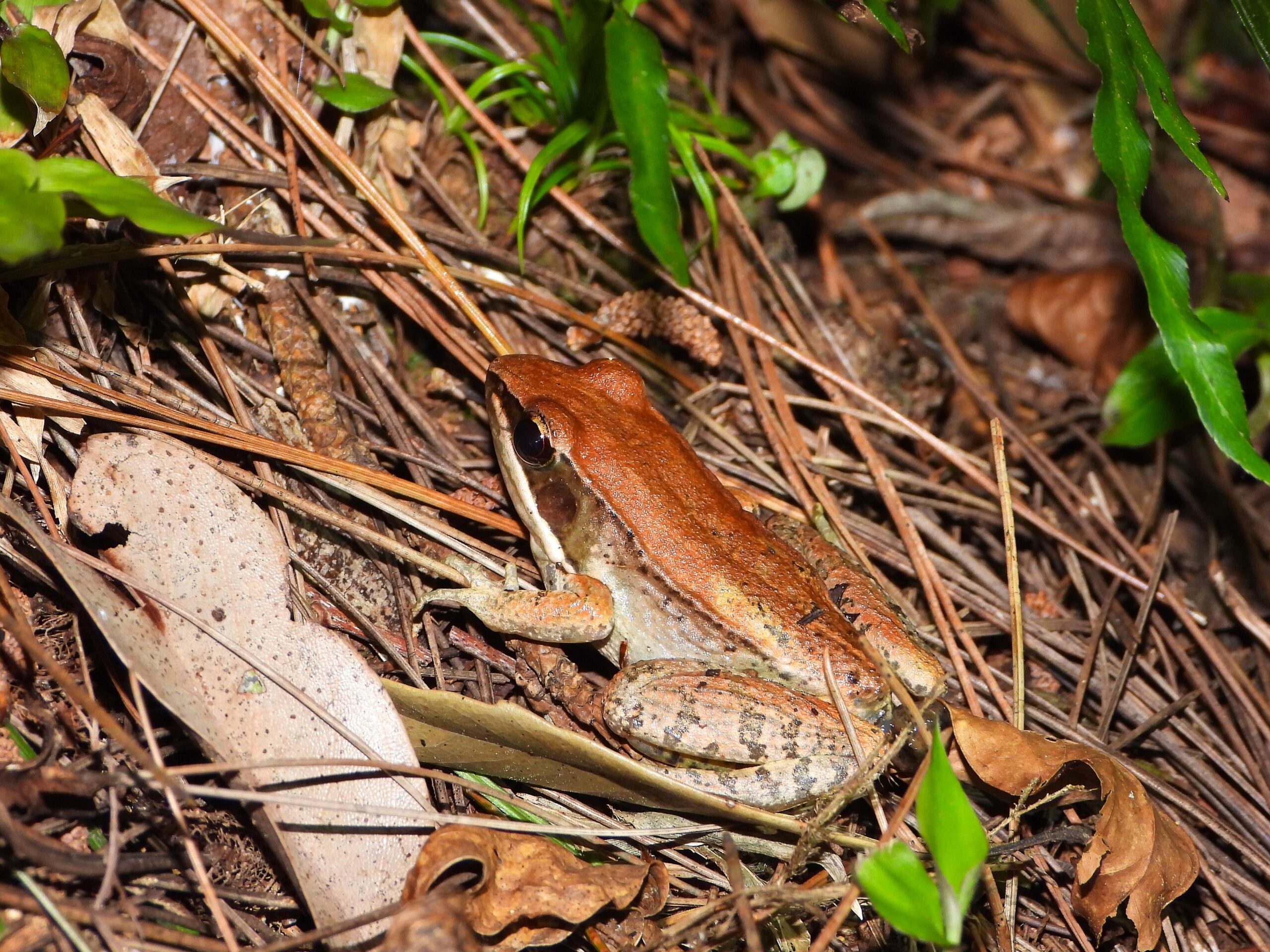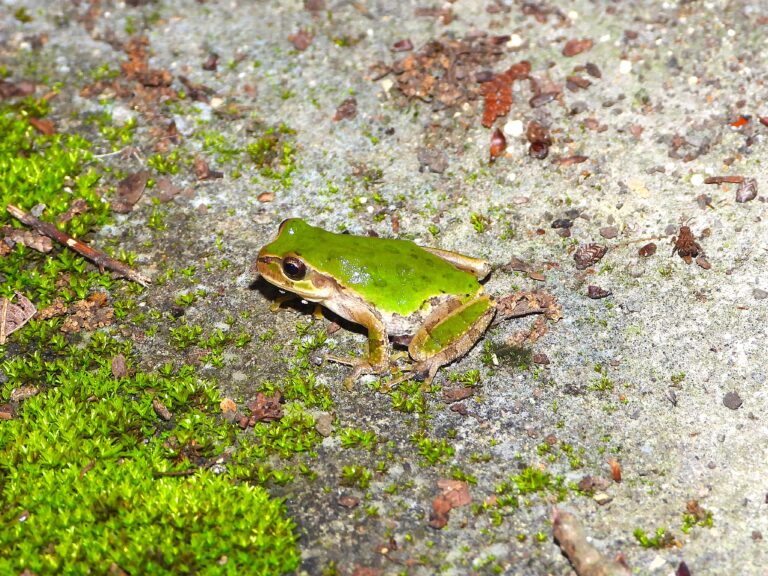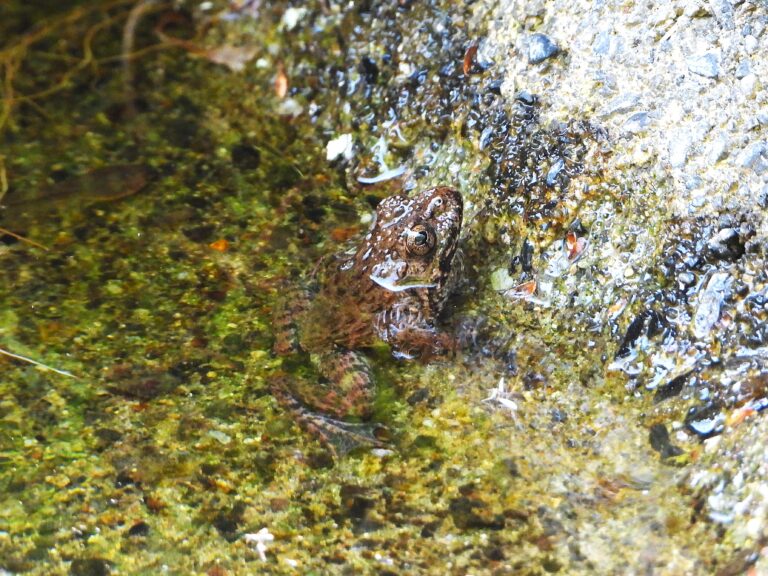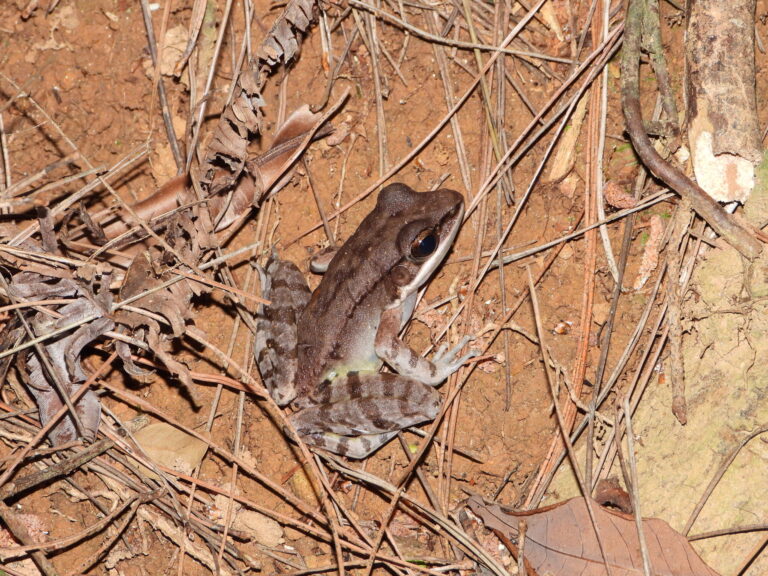Yaeyama Harpist Frog (Nidirana okinavana) – Wildlife of Japan
Introduction
The Yaeyama Harpist Frog is an island-endemic “music frog” found only in the Yaeyama Islands of Japan—specifically Ishigaki and Iriomote. Once thought to occur in Taiwan as well, recent taxonomic work (Lyu et al., 2025, ZooKeys) confirmed that the true Nidirana okinavana is restricted to Japan, while Taiwanese frogs belong to a newly named species, Nidirana shyhhuangi. The species’ melodious, harp-like call and unique mud-burrow nesting behavior make it one of the most remarkable amphibians in Japan.
Appearance
Adults measure about 4–4.5 cm in snout–vent length. They are compact in build with brown to olive coloration, a pale underside often with dark belly blotches (the origin of the Japanese name “harabuchi”), and a clear dorsolateral fold running from shoulder to hip. Males have a visible suprabrachial gland near the upper arm during breeding season.
Habitat & Distribution
The Yaeyama Harpist Frog inhabits lowland to foothill forest edges, swamps, irrigation ditches, and wetland margins with soft muddy ground. Its natural range is strictly limited to Ishigaki and Iriomote Islands. No records exist from other islands or mainland Japan.
Behavior
This nocturnal species is famous for its clear, metallic, harp-like calls that echo through wetlands on humid nights. Males often call from near shallow mud burrows that serve as nesting sites.
Diet
There are no detailed diet studies, but like most ranid frogs, it feeds on small invertebrates such as insects and spiders found near water and forest edges.
Reproduction
From July to November, males excavate small mud burrows at the margins of wetlands and call from these nests to attract females. Females lay eggs inside the burrow water, and the tadpoles develop there. Captive breeding by the Okinawa Churashima Foundation confirmed clutch size, larval growth, and even male–male combat during breeding.
Conservation
The species is listed as Endangered (EN) by the IUCN and as Endangered Category II (VU) on Japan’s Ministry of the Environment Red List. Major threats include drainage of wetlands, land development, and trampling of muddy nesting sites. Because of its highly localized range, even small habitat disturbances can have severe population effects.
Author’s Impression
If you want to find this rare frog, visit Ishigaki or Iriomote on a humid night after rain. Follow the soft, metallic “ting-ting” call coming from muddy edges of rice paddies or forest ditches—you might spot a small brown frog half-hidden beside a burrow. Be careful where you step; their nests are fragile.







